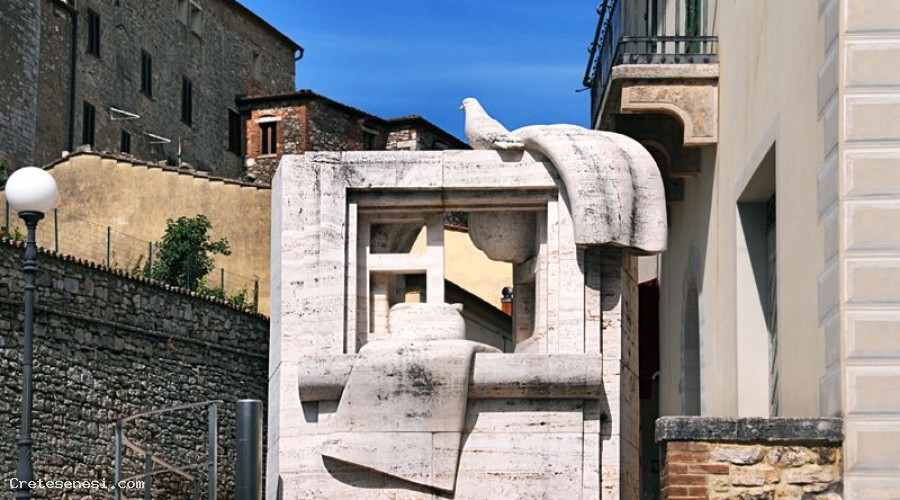Palaces & Monuments
Scultura: Finestra sul Mondo
RAPOLANO TERME
Sculrura modern Piazzone placed in front of the intersection, on the left coming from Porta Nuova
The author
Cordelia von den Steinen (Basel, 1941), formed in Switzerland, arrived in Milan in 1963 and enrolled at the Brera Academy as a student of Marino Marini. In 1965 he moved to Rome for a year, then in 1966 in Carrara meets the sculptor Pietro Cascella, who became his companion. After a period in Pietrasanta and a stay in Paris, where he lives and works in the Cité des Arts, in 1977 he moved to the castle of Verrucola of Fivizzano (Lucca). His career, initially aimed to design, progressively focuses on sculpture, thanks to the circle of artists active between Carrara and Pietrasanta (including Lipchitz, Moore, Nivola, Penalba). Winner of numerous international awards and professor of drawing and sculpture at various institutions, has also created works in terracotta, theatrical costumes, jewelry, and has often been devoted to urban and monumental sculpture. The sculpture at the entrance of Via Mazzini in Rapolano seems to recover the Renaissance concept of art as a "window on the world": a space which, although bounded by the magnificent physicality of travertine, is crossed from air and light and seems to take these life in a universe almost magical atmosphere rarefied, set within simple shapes and turgid.Sculrura modern Piazzone placed in front of the intersection, on the left coming from Porta Nuova
The author
Cordelia von den Steinen (Basel, 1941), formed in Switzerland, arrived in Milan in 1963 and enrolled at the Brera Academy as a student of Marino Marini. In 1965 he moved to Rome for a year, then in 1966 in Carrara meets the sculptor Pietro Cascella, who became his companion. After a period in Pietrasanta and a stay in Paris, where he lives and works in the Cité des Arts, in 1977 he moved to the castle of Verrucola of Fivizzano (Lucca). His career, initially aimed to design, progressively focuses on sculpture, thanks to the circle of artists active between Carrara and Pietrasanta (including Lipchitz, Moore, Nivola, Penalba). Winner of numerous international awards and professor of drawing and sculpture at various institutions, has also created works in terracotta, theatrical costumes, jewelry, and has often been devoted to urban and monumental sculpture. The sculpture at the entrance of Via Mazzini in Rapolano seems to recover the Renaissance concept of art as a "window on the world": a space which, although bounded by the magnificent physicality of travertine, is crossed from air and light and seems to take these life in a universe almost magical atmosphere rarefied, set within simple shapes and turgid.